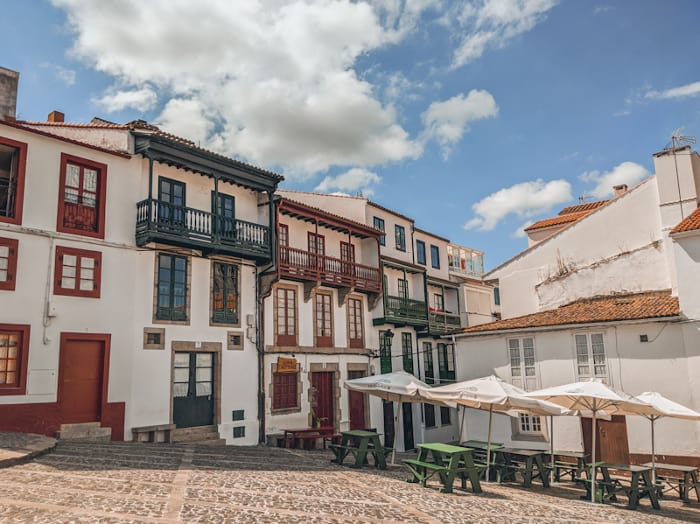BETANZOS
Capital of Galician Gothic, it is a city in the province of A Coruña, with around 13,000 inhabitants, and capital of the region of the same name. The town, located in the Rías Altas area, is located between the Mandeo and Mendo rivers, forming the so-called Ría de Betanzos. Its old quarter stands out for its notable Gothic monuments and has been declared a Historic-Artistic Site in 1970. Pilgrims traveling the English Way will arrive in Betanzos after leaving the town of Pontedeume and before reaching the village of Bruma, just a few kilometers from Santiago de Compostela.
Betanzos is part of the As Mariñas area, an enclave of contrasts between the seafaring, rural and urban traditions. The Andrade lineage, in the Middle Ages, and the philanthropist García Naveira brothers, left their mark on the city at the end of the 19th and beginning of the 20th century, not only for their heritage, but also for their wines, festivals, fairs and traditions.
Betanzos was a pre-Roman settlement, a flourishing medieval town, a bourgeois cradle, but also a dethroned provincial capital of the Kingdom of Galicia. It retains that stately air that only cities with sediment have, those where the parchments have recorded history and the cobbled arcades have witnessed the strength and decline of the town.
There have been countless emigrants, millionaires, travelers and even cosmopolitans, but the García Naveira brothers, Juan and Jesús, have undoubtedly been the most recognized residents of Betanzos. Sons of farmers, they sought and reaped fortune in Argentina around the year 1870. Upon their return to their native town, their philanthropic spirit led them to invest a good part of their money in works for the benefit of their countrymen.
